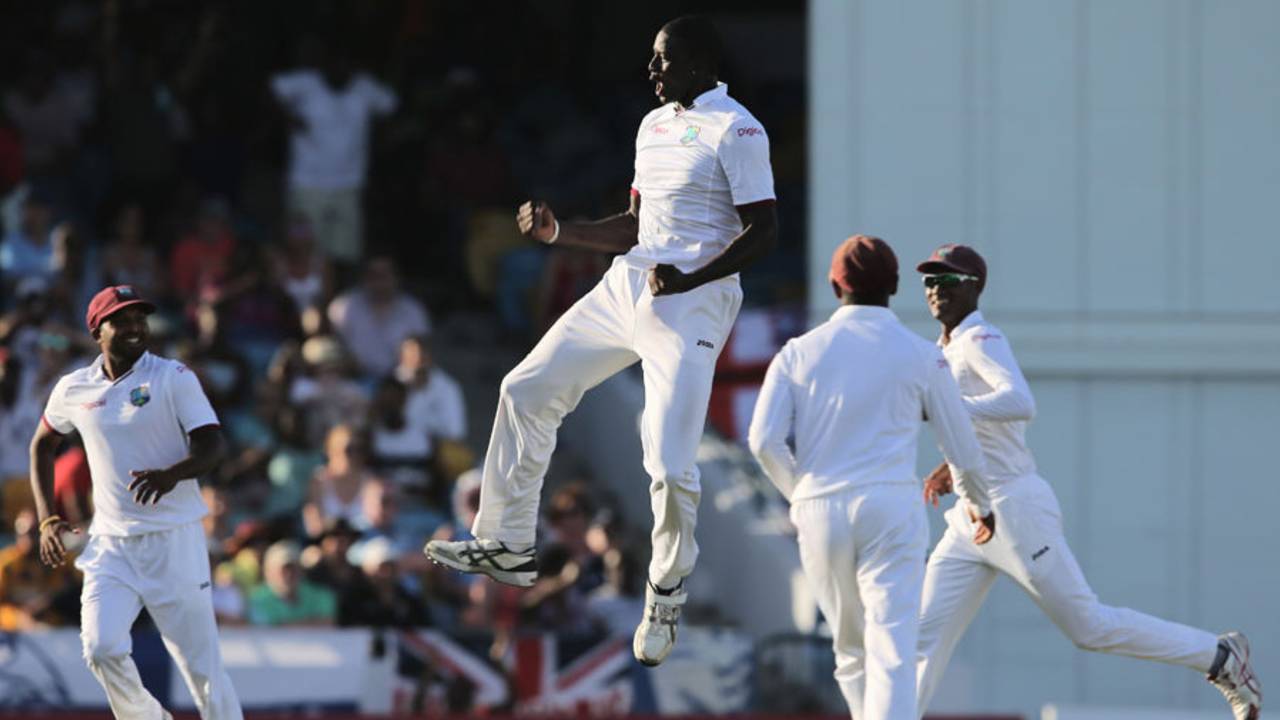The last time England played Test cricket
in Barbados, 1628 runs were scored for the loss of 17 wickets in what seemed like a month-and-a-half. It was, for all but greedy batsmen and statisticians of a certain leaning, desperately tedious.
Nobody could claim this game has been tedious. While the quality might have been questionable - the batting especially - the entertainment value has been high. And while it may well finish early, some of the best Tests -
Edgbaston 2005 or
Lord's 2000, for example - do.
Despite only 77 overs being bowled, 18 batsmen were dismissed on day two of this Test. That is an average of a wicket every four-and-a-half overs. At the end of an attritional series, this was a day's play that felt like opening a window on a stuffy room.
Now compare that to events in
Khulna, Bangladesh, where Pakistan's first innings of 628 was followed by Bangladesh's second innings of 555 for 6. Such an imbalance between bat and ball does nothing for the ongoing viability of Test cricket. Overly flat pitches are a greater danger to the continued popularity of long-form cricket than rebel leagues.
The second day in Barbados was a reminder of how much more entertaining Test cricket can be if bowlers are provided more encouragement. Not only does it progress the game at a pace that demands constant vigilance, but it might encourage some batsmen to play more positive cricket.
Certainly the only batsman to flourish here was
Jermaine Blackwood. On a day where only one man registered a score in excess of 25, Blackwood's aggressive 85 may yet define the game. While England's batsmen prodded around for 21 overs in scoring just 39, Blackwood progressed at almost a run a ball, thrashing 68 of his runs in boundaries.
In truth, the conditions were not so bad. It is more that modern batsmen have become spoiled by flat and, very often, slow surfaces offering bowlers precious little. When the balance of power is changed even slightly, it seems batsmen lose their heads more quickly than their wickets. To see Joe Root, usually so comfortable on the back foot, drawn into a drive, or Ian Bell, usually so adept on such slow surfaces, play across a straight one, was to see a somewhat rattled side. Batsmen of an earlier age, especially those developed on uncovered pitches, would surely have acquitted themselves better.
It was a point made by the players of both sides after play. James Anderson, who claimed his Test-best overseas figures, described the pitch as "no minefield by any stretch of the imagination" while Blackwood described it "a good wicket" that, after the new ball, was "pretty easy to bat on". Neither could fully explain the loss of 18 wickets in a day, though Anderson rated his new-ball spell as one of his best and did admit that, in England's second innings, as West Indies' bowlers maintained excellent probing lines and lengths, that the batsmen "weren't able to soak up pressure."
Still, both also agreed that conditions were deteriorating ("very quickly", according to Blackwood) with West Indies hoping to chase a total of something less than 200. If Moeen Ali can recapture his form from last summer - and struggled with his length on day two - even that may prove demanding on a pitch providing assistance to spin bowling. It promises to be a fascinating encounter.
All of which makes you wonder if the ICC might be well served investing in research on pitches to try to improve the balance between bat and ball in the modern game. That does not mean striving for homogenisation of conditions, but trying to avoid too many surfaces like those seen in
Nottingham in 2014,
Nagpur in 2012 or Barbados in 2009. Flat pitches may be perfect for the limited-overs game, but in Tests they can create an imbalance that dilutes the entertainment value. Perhaps, alongside neutral match officials, there is room for neutral groundstaff consultants?
Colin Graves has been among the spectators in Barbados. It was Graves, the incoming chairman of the ECB, who recently suggested that it was worth considering playing Tests over four rather than five days. While Graves' ideas were not well received - partly, perhaps, as one of his ways of mitigating for the loss of a day was the somewhat naive suggestion that they could simply bowl more overs on the first four days - there is some merit in reflecting at ways that Test cricket can retain relevance and popularity in the age of T20 and other, less time-consuming, leisure pursuits.
Perhaps it is not about reducing the timescale as much as reducing the batsmen's advantages. Test cricket is, very often, more entertaining when ball slightly dominates bat.
Either way, a fascinating fourth innings looms. And the result could yet have consequences. For West Indies - a side at the start of a rebuilding operation - to square this series would be an enormous boost to Phil Simmons and co, while defeat for England could prove damaging to Peter Moores. There is plenty at stake and not a ball can be missed. Isn't that the way Test cricket should be?
